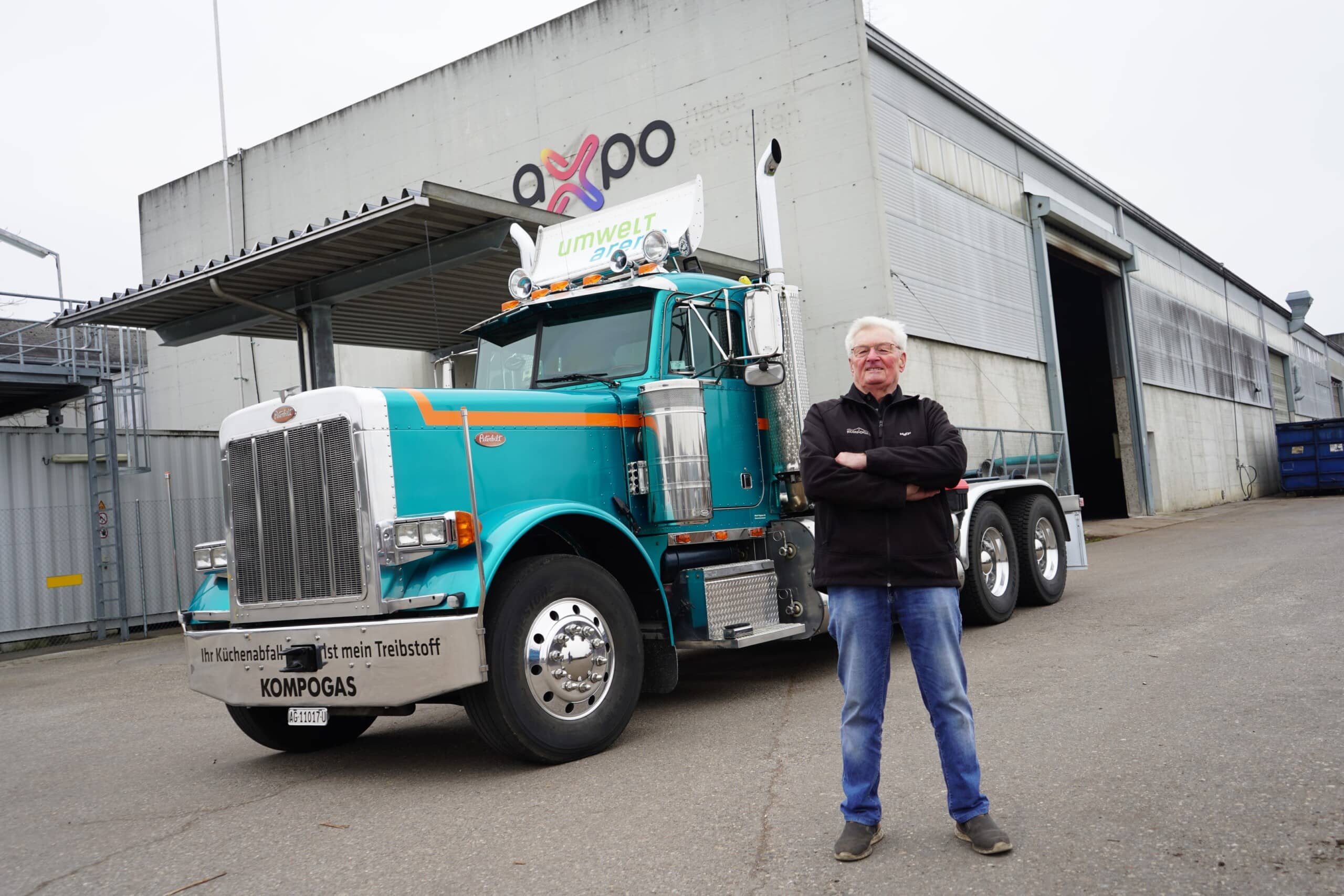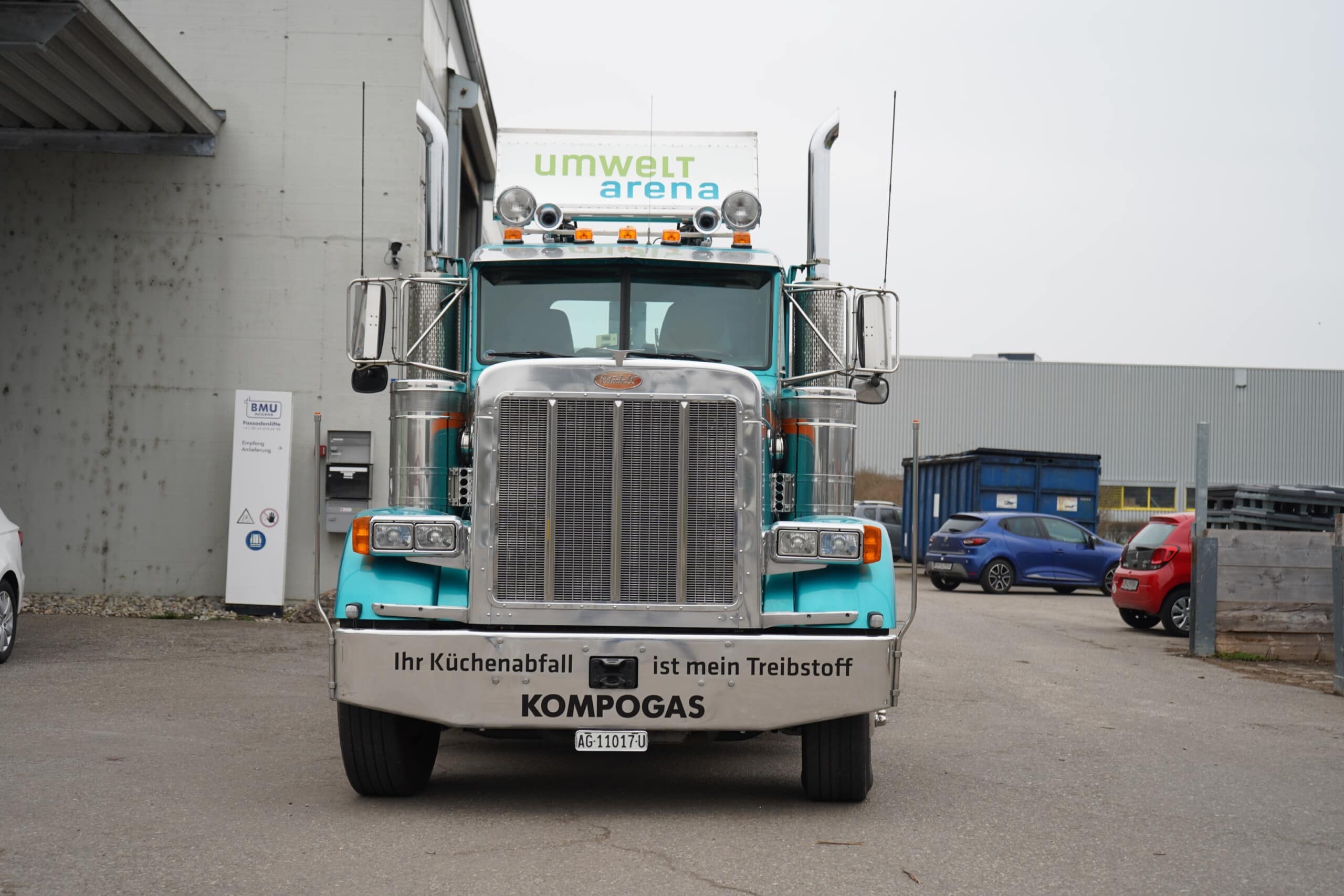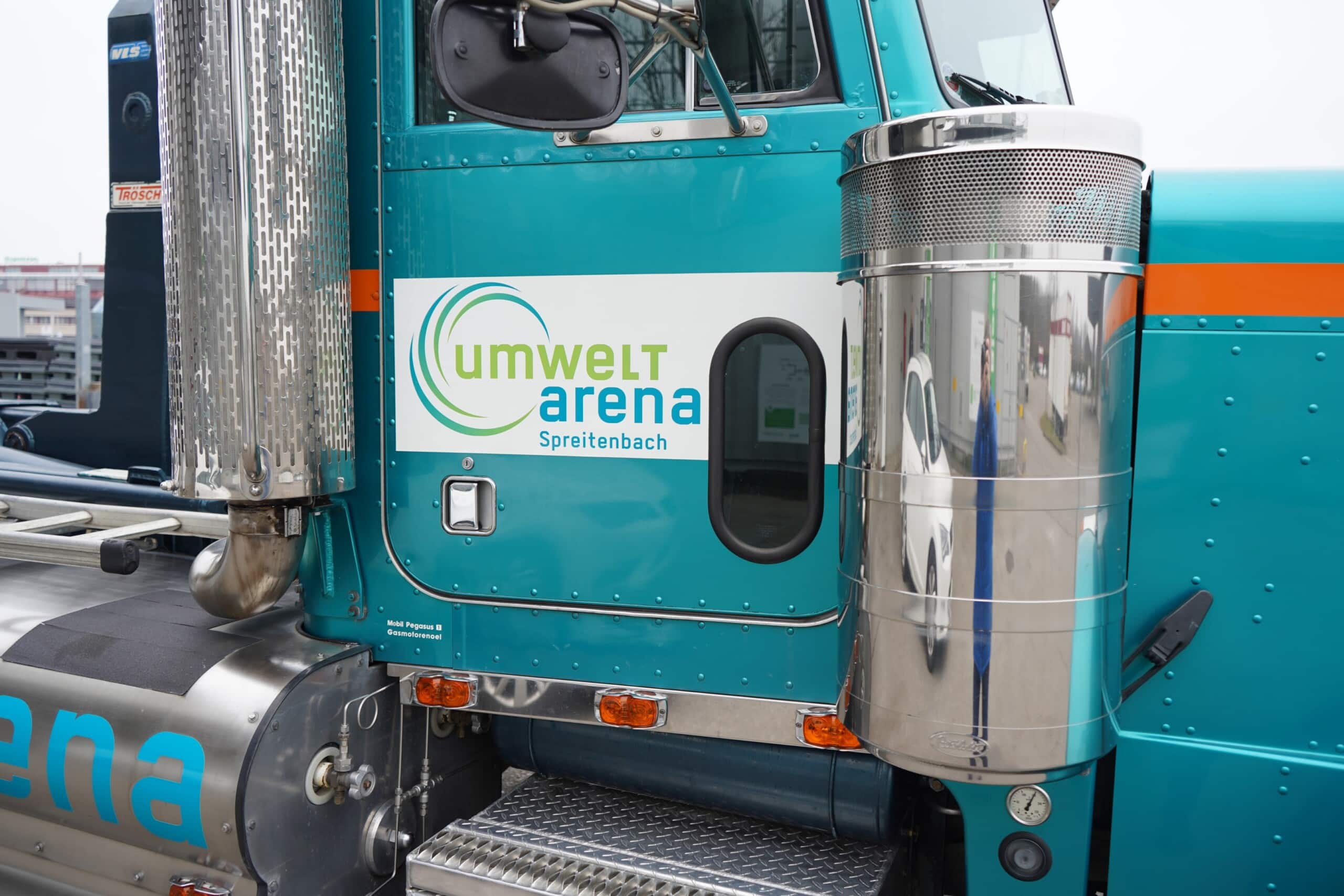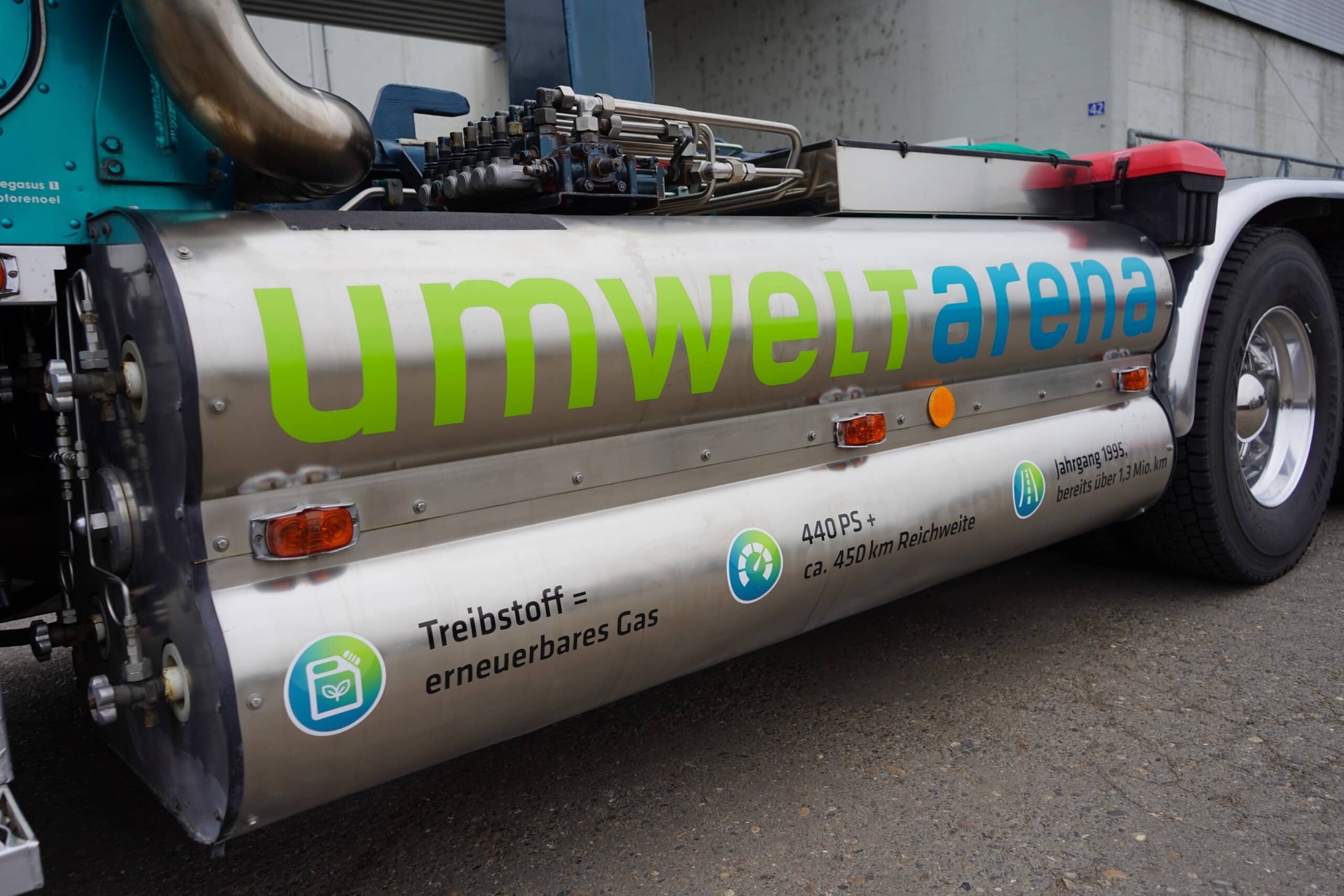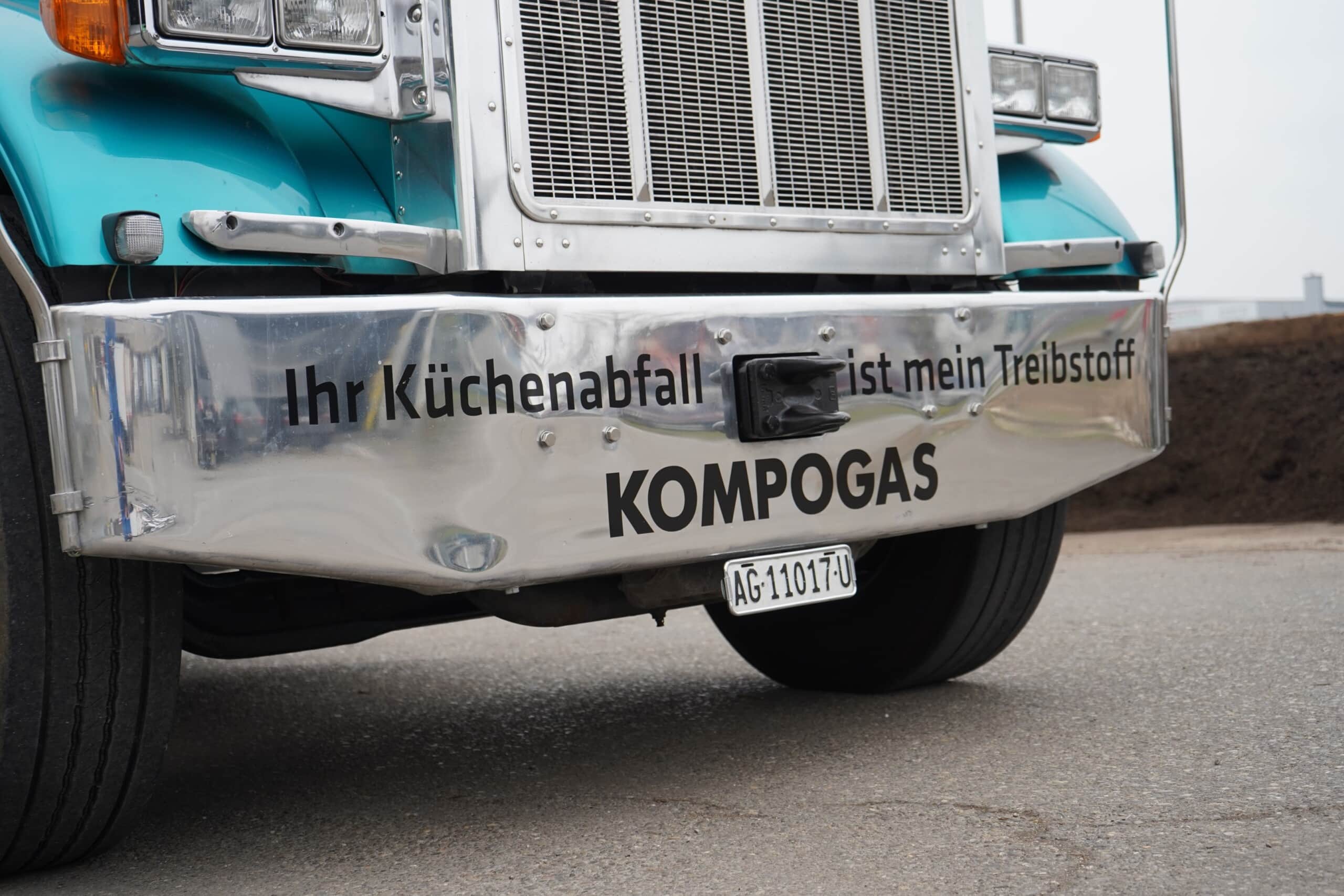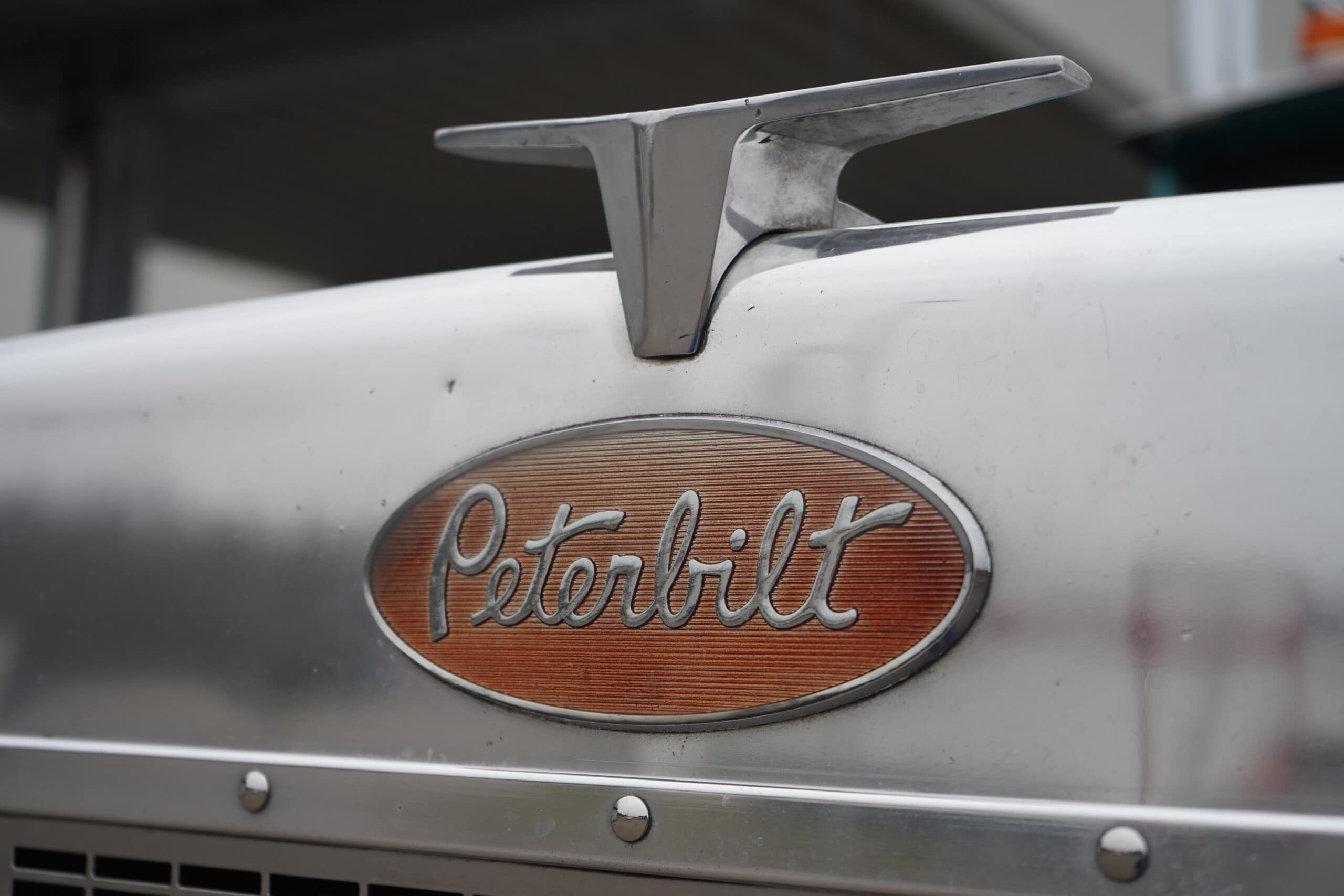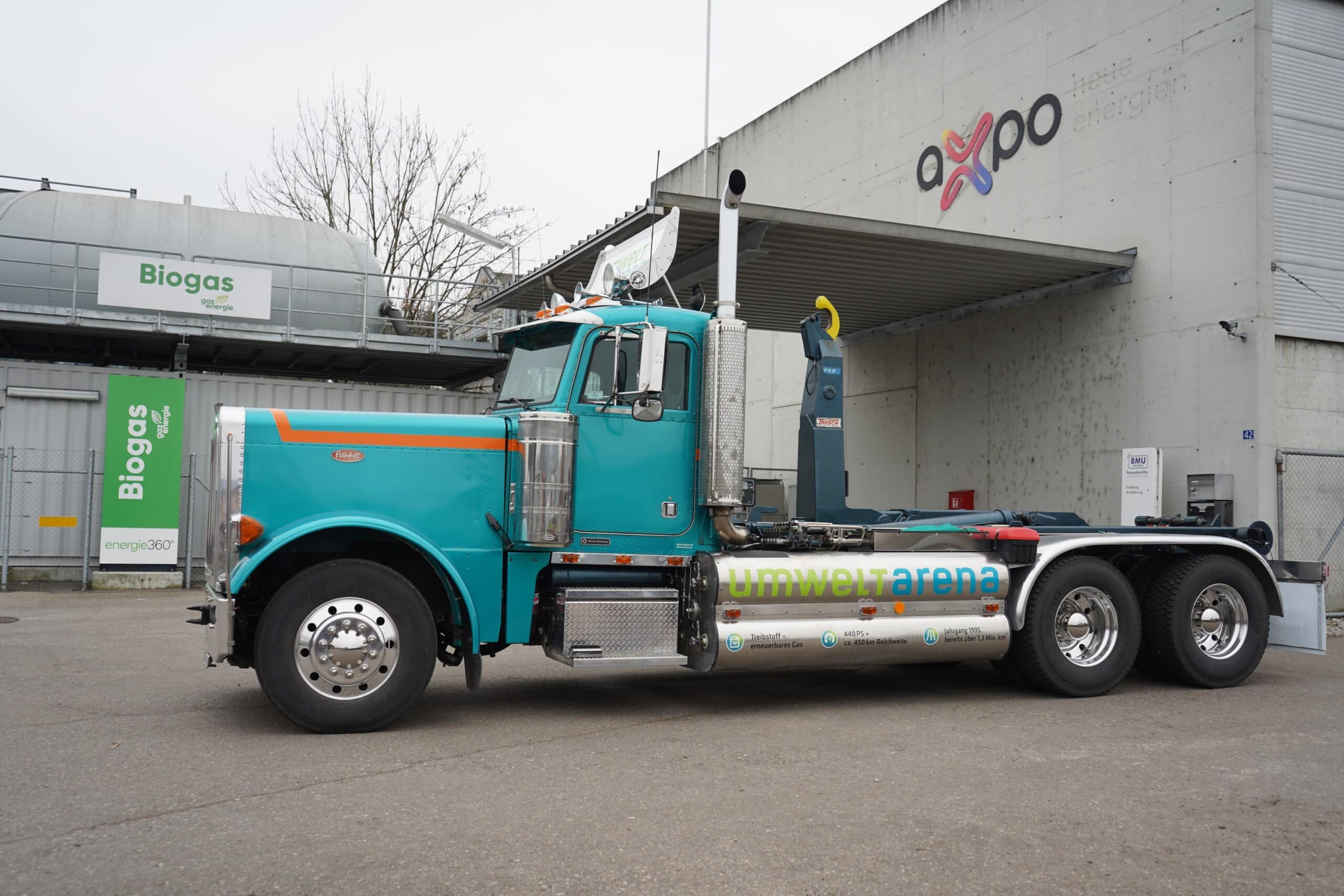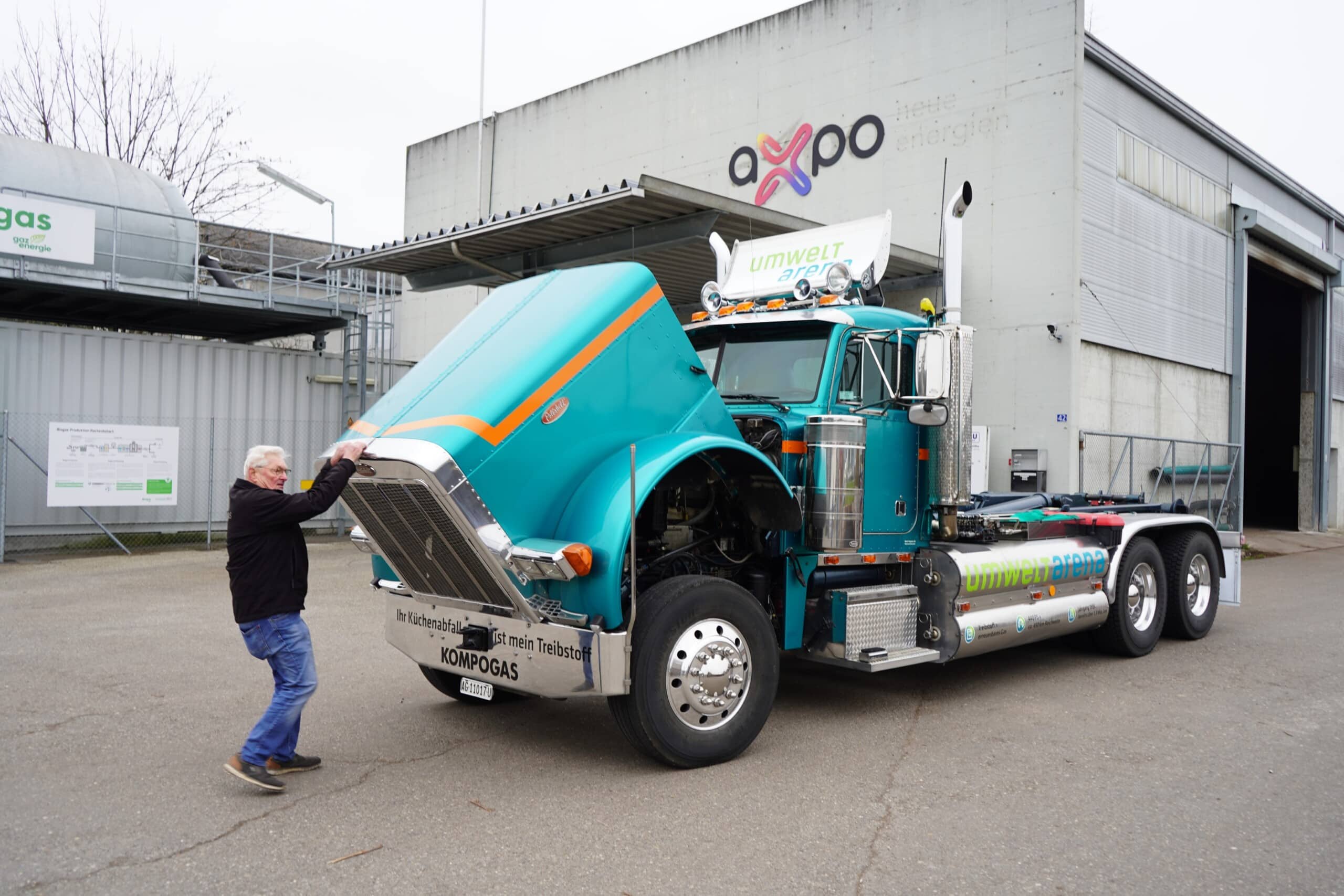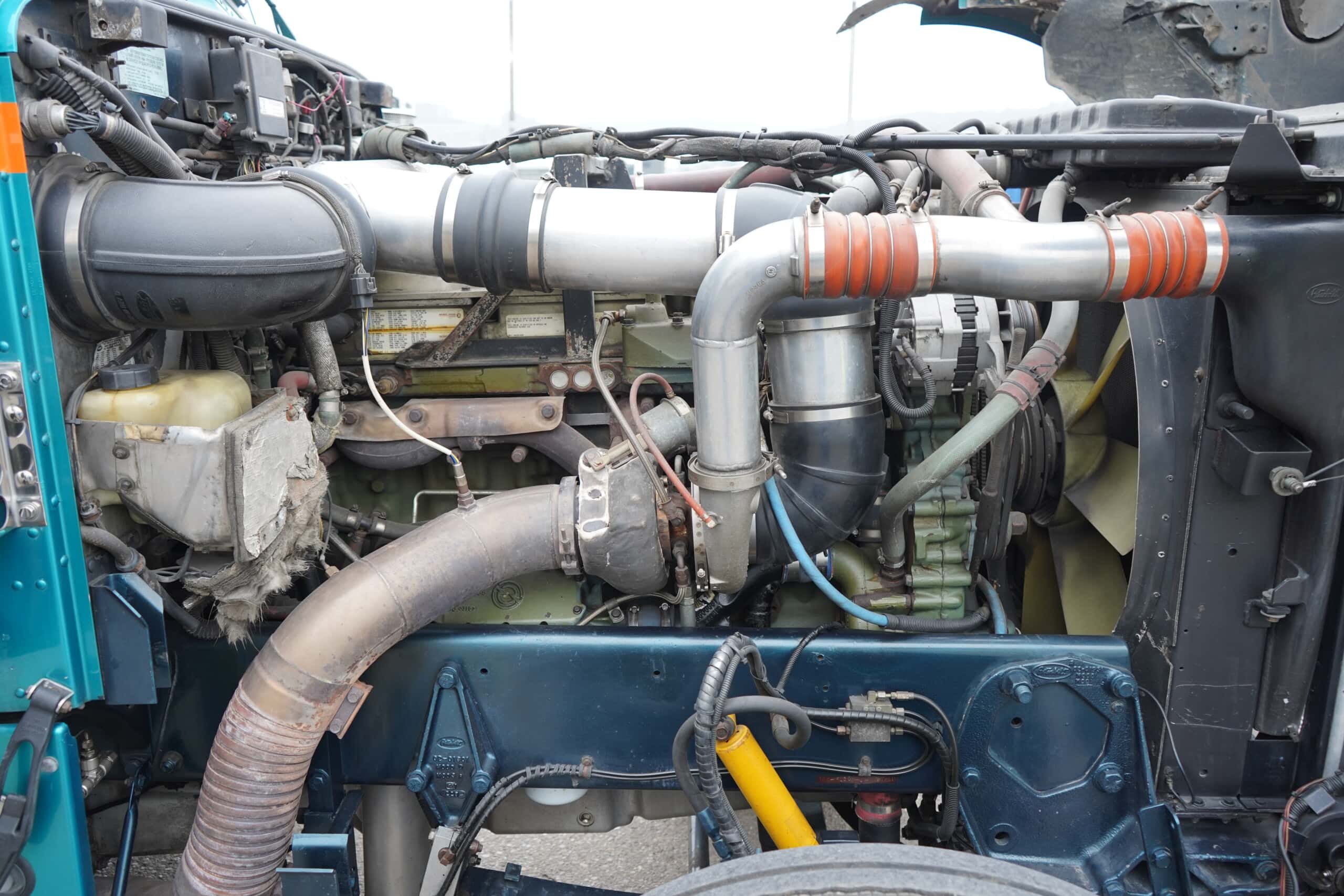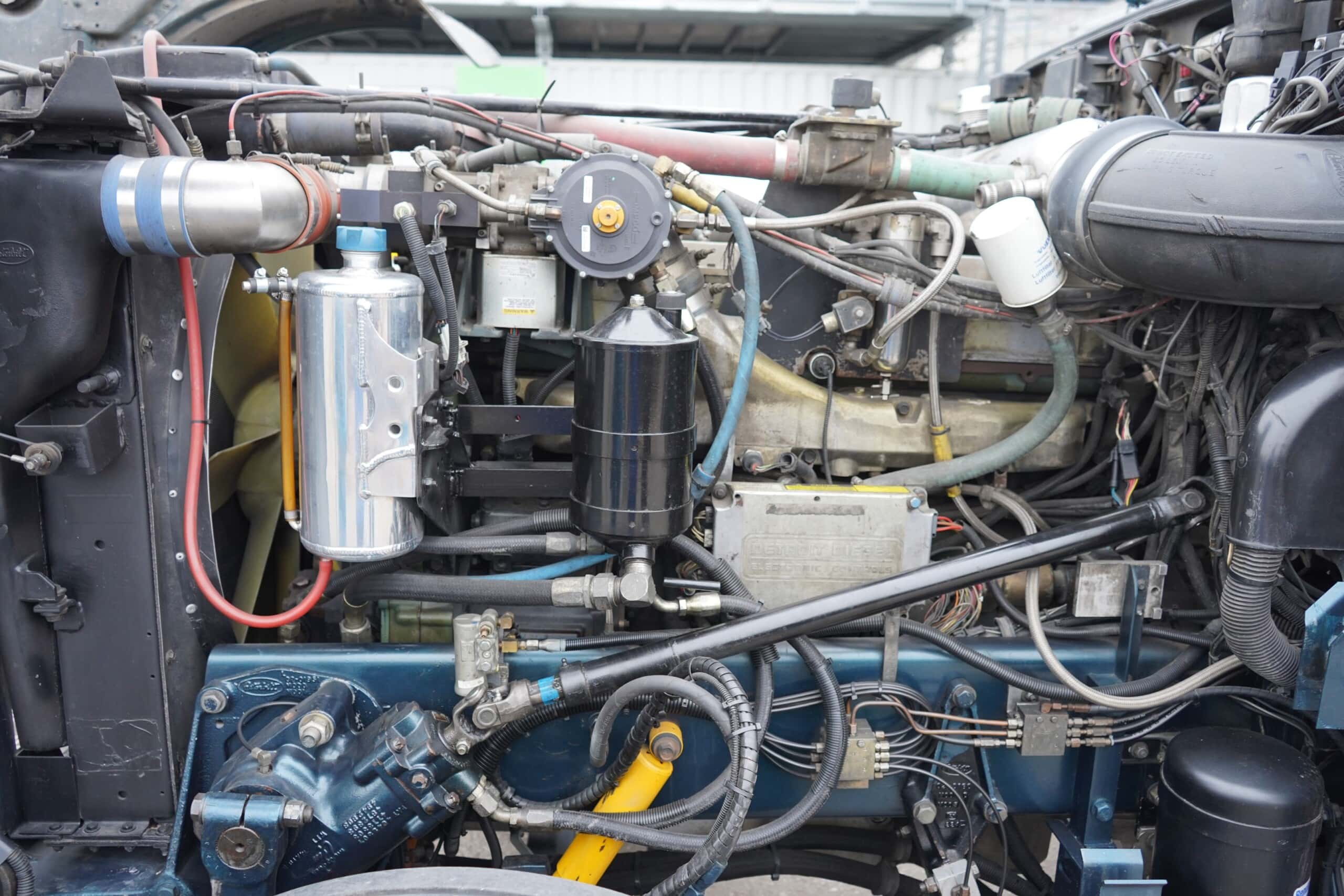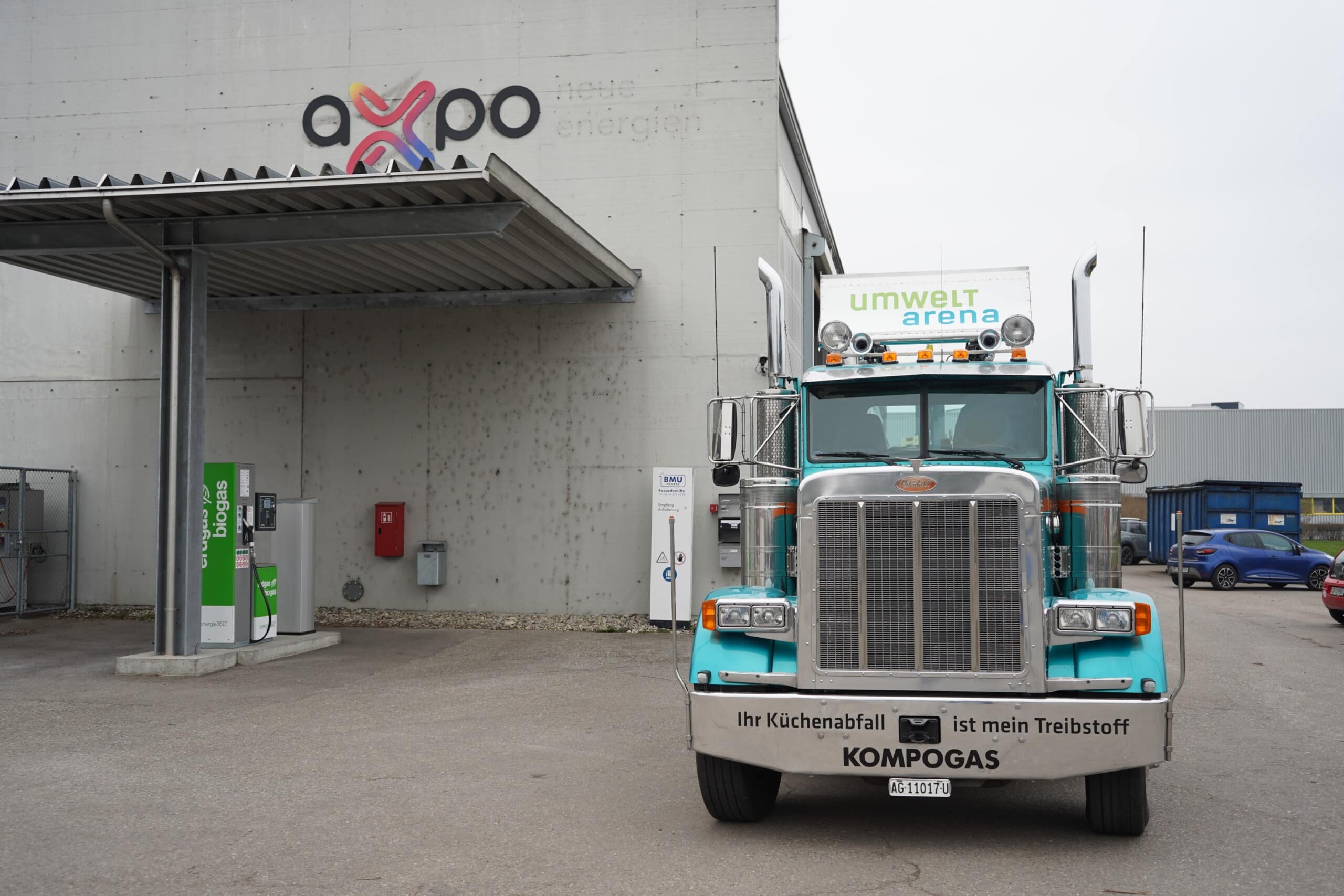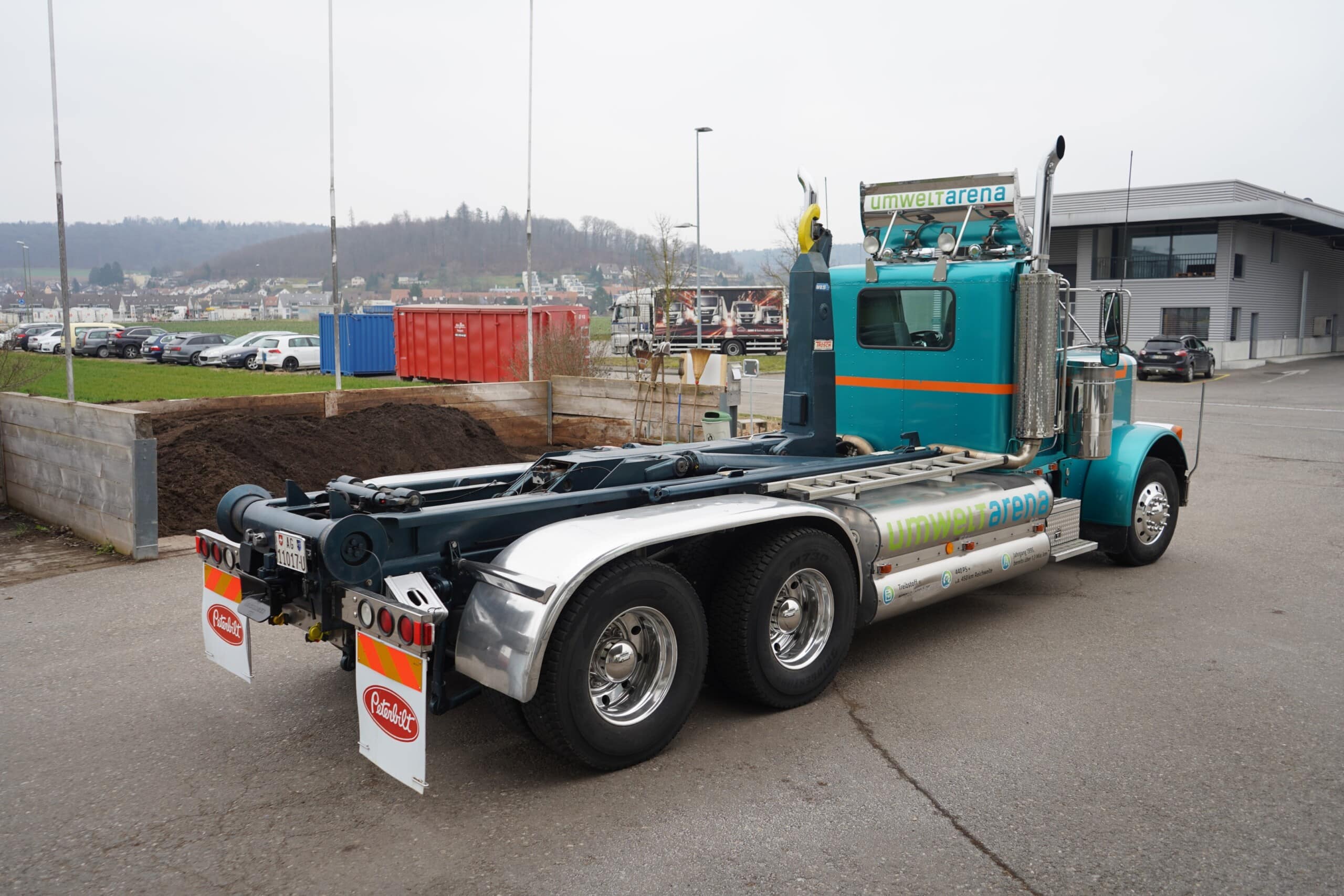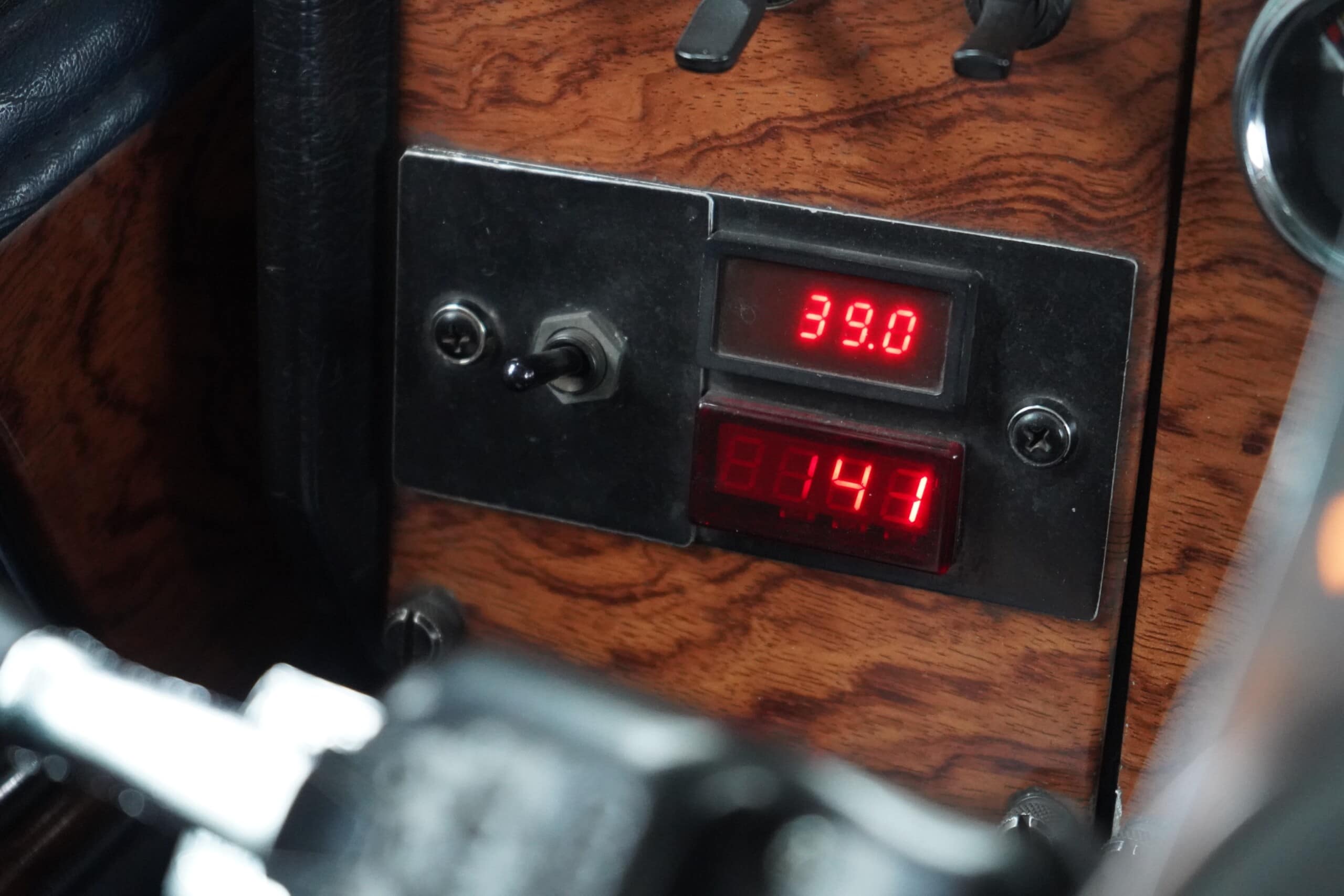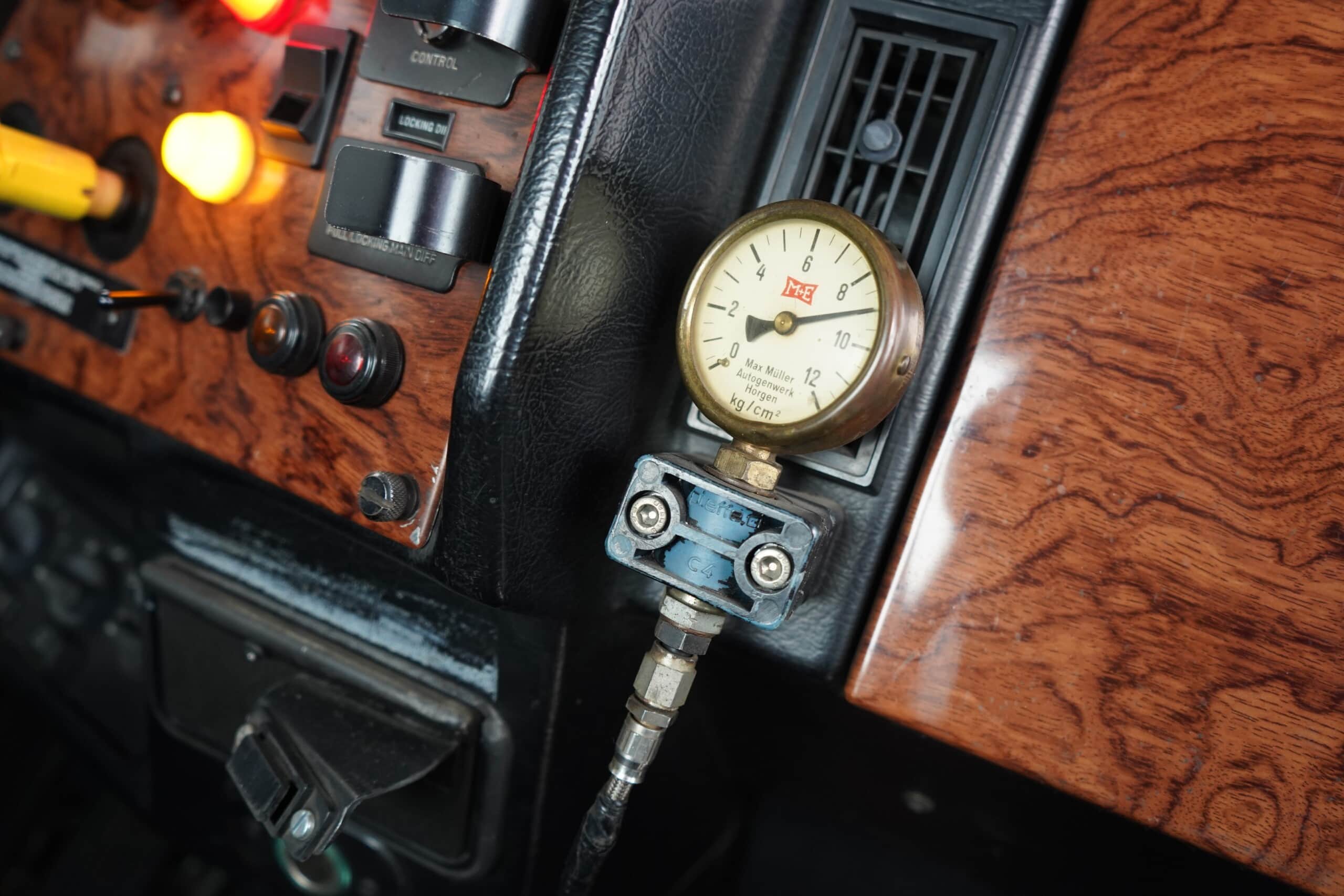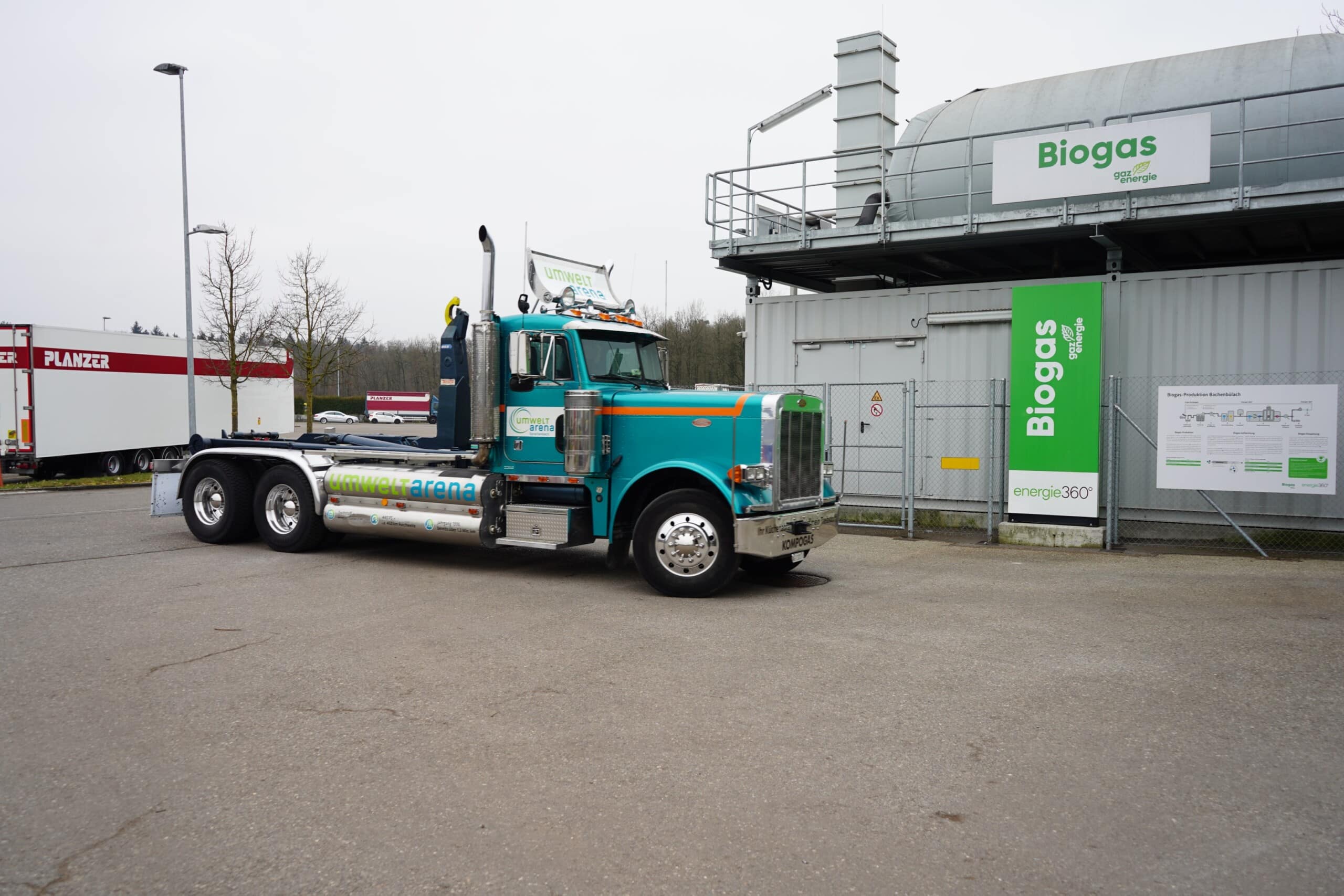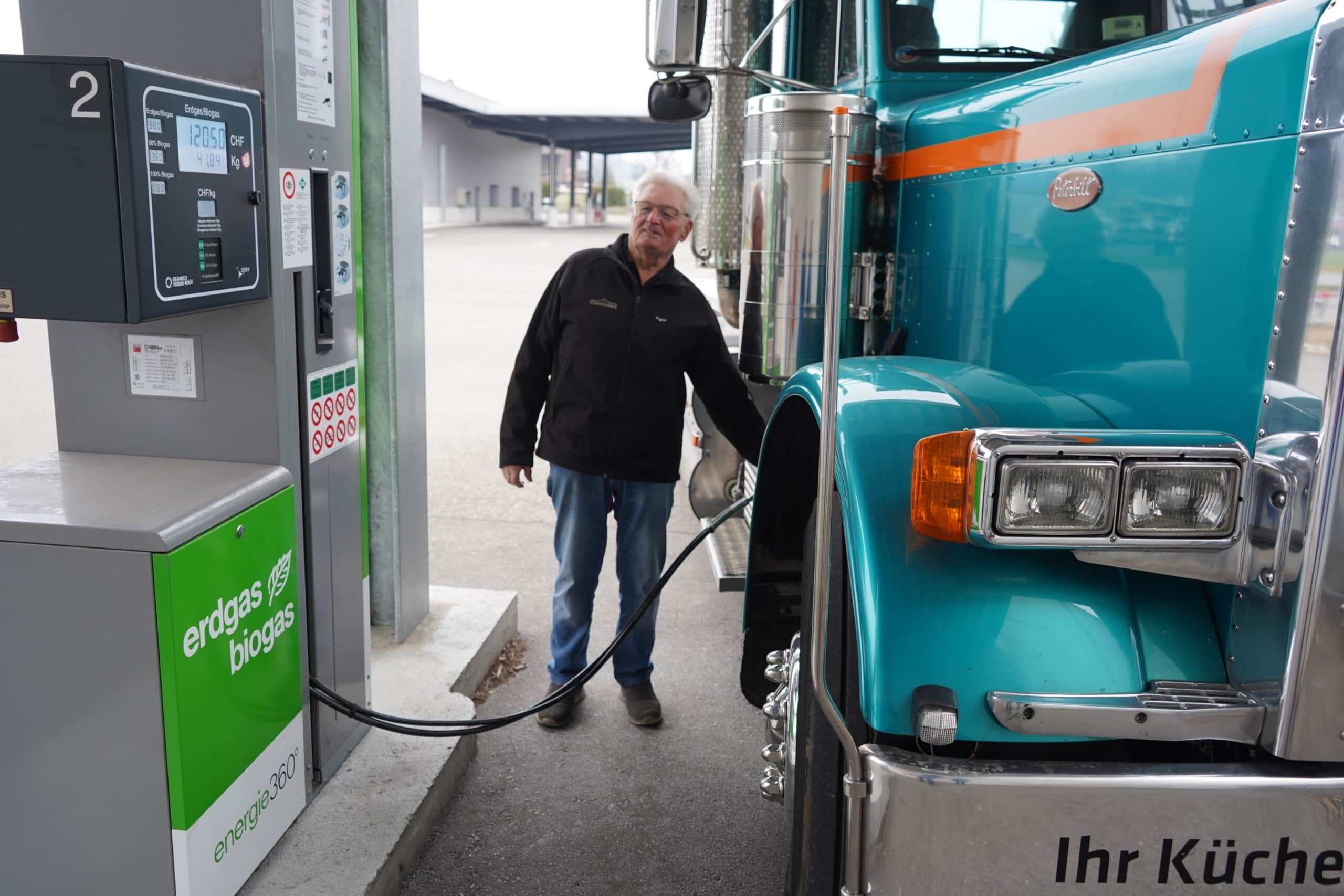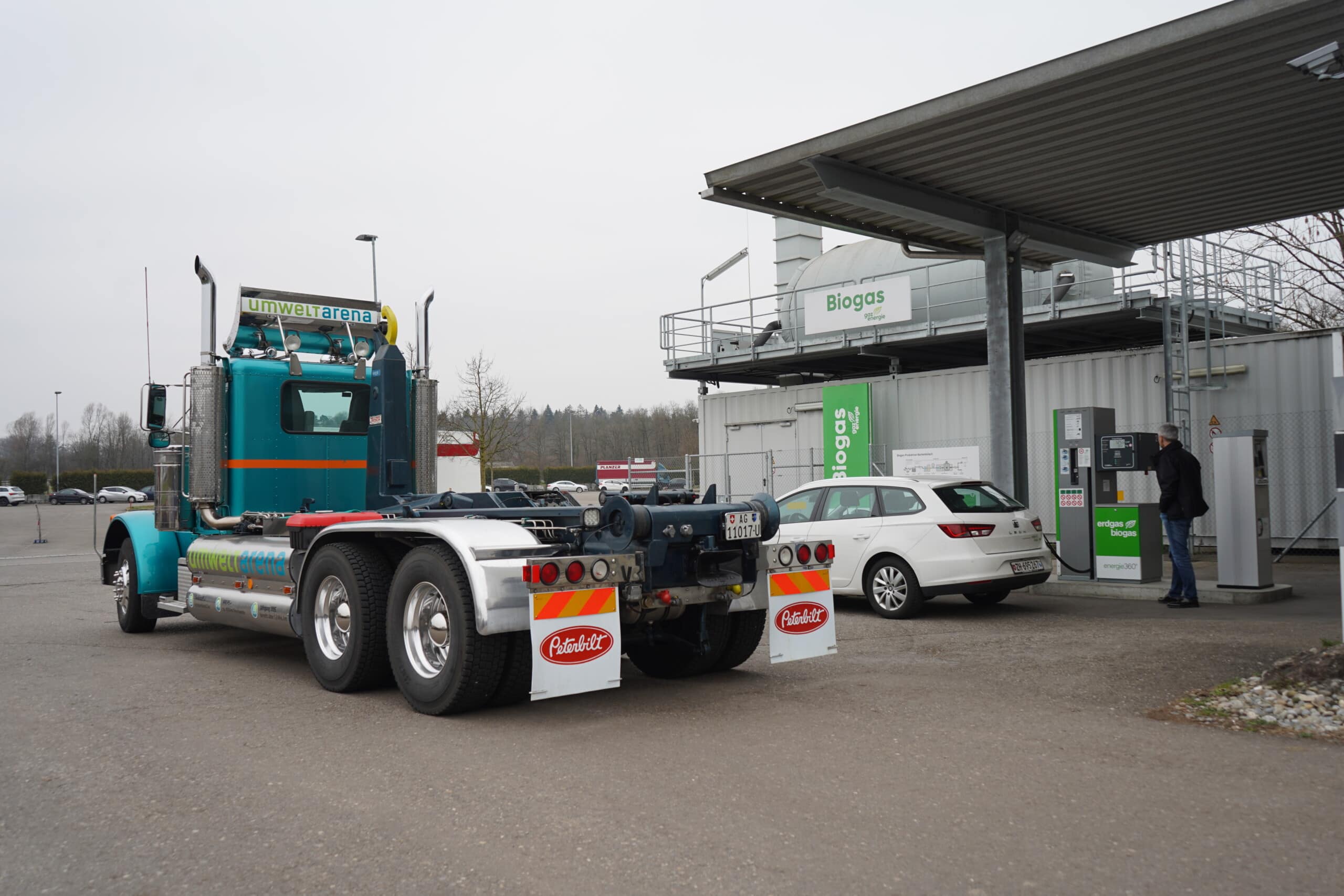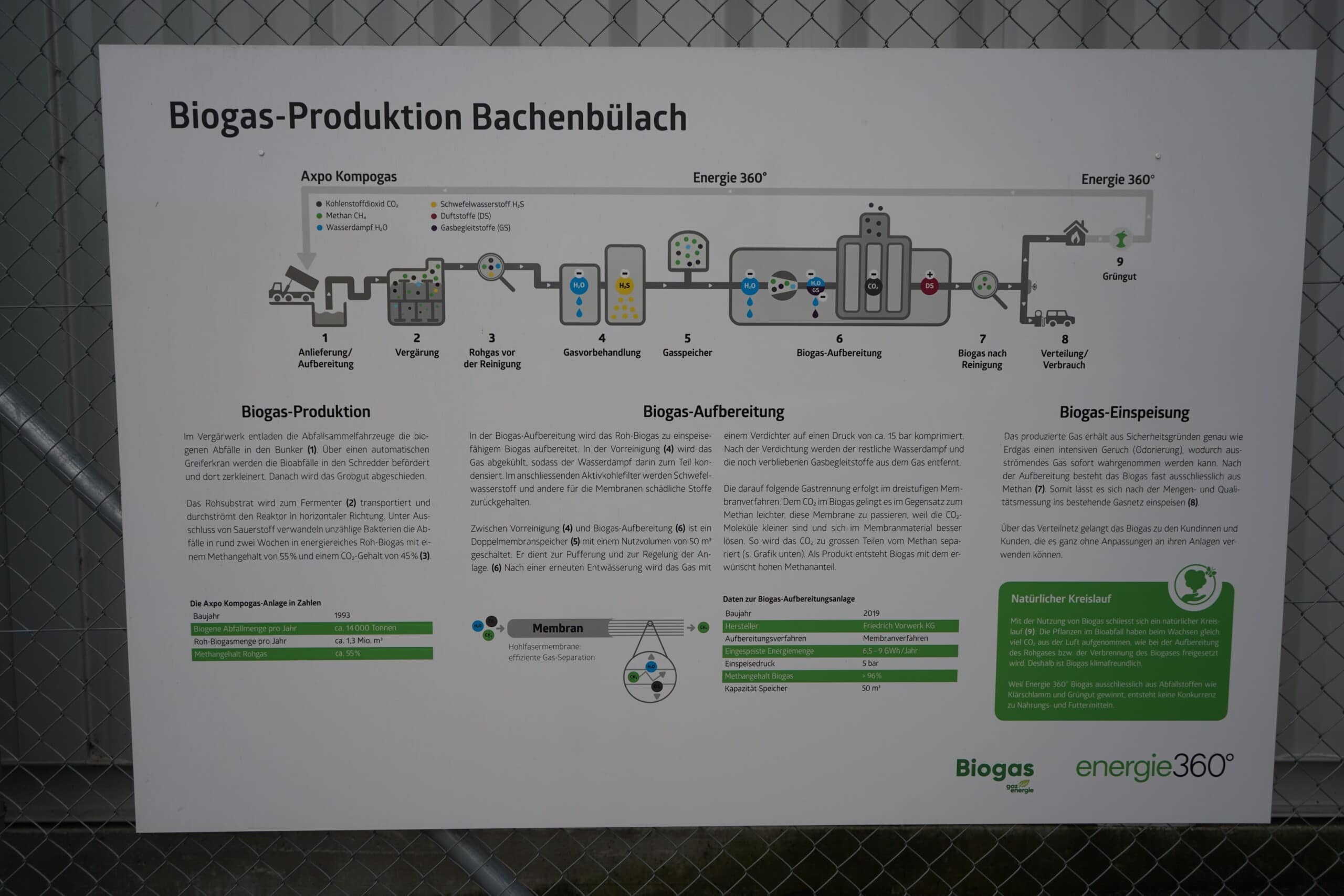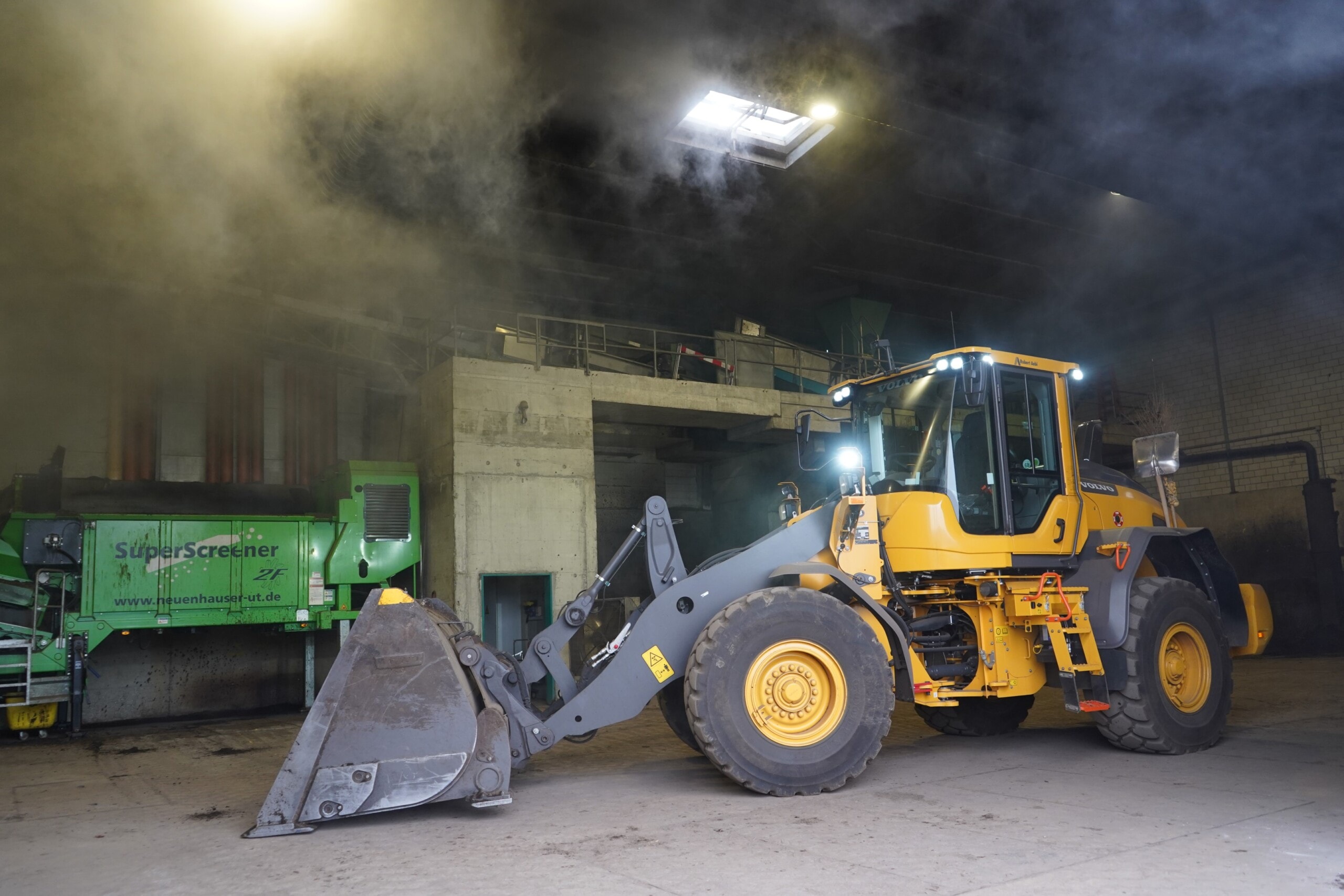Portal for more climate-friendly mobility
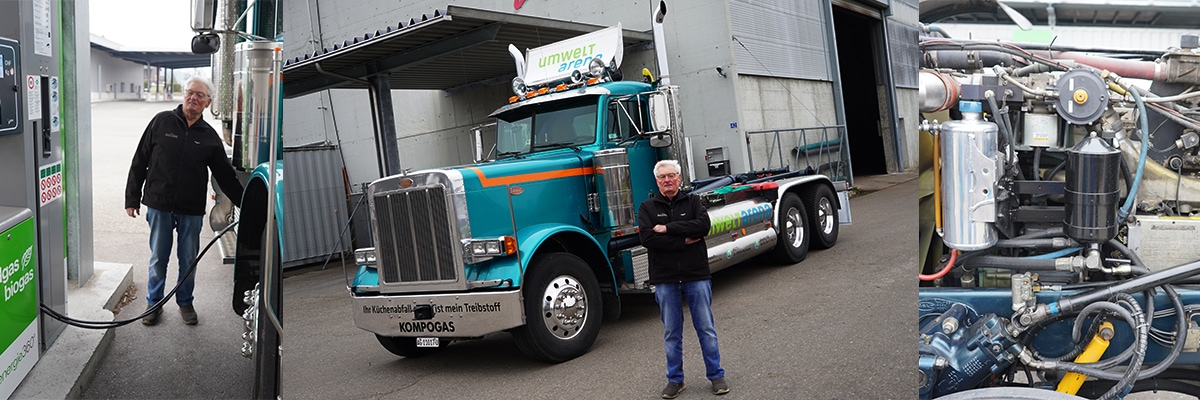
Carbon-neutral over 1.3 million km
The mighty green Peterbilt truck with its large, vertical chrome exhaust pipes is still an eye-catcher after 28 years on Swiss roads. And rightly so: the US truck is powered by biogas, so it reduces CO2 emissions every mile of the way.
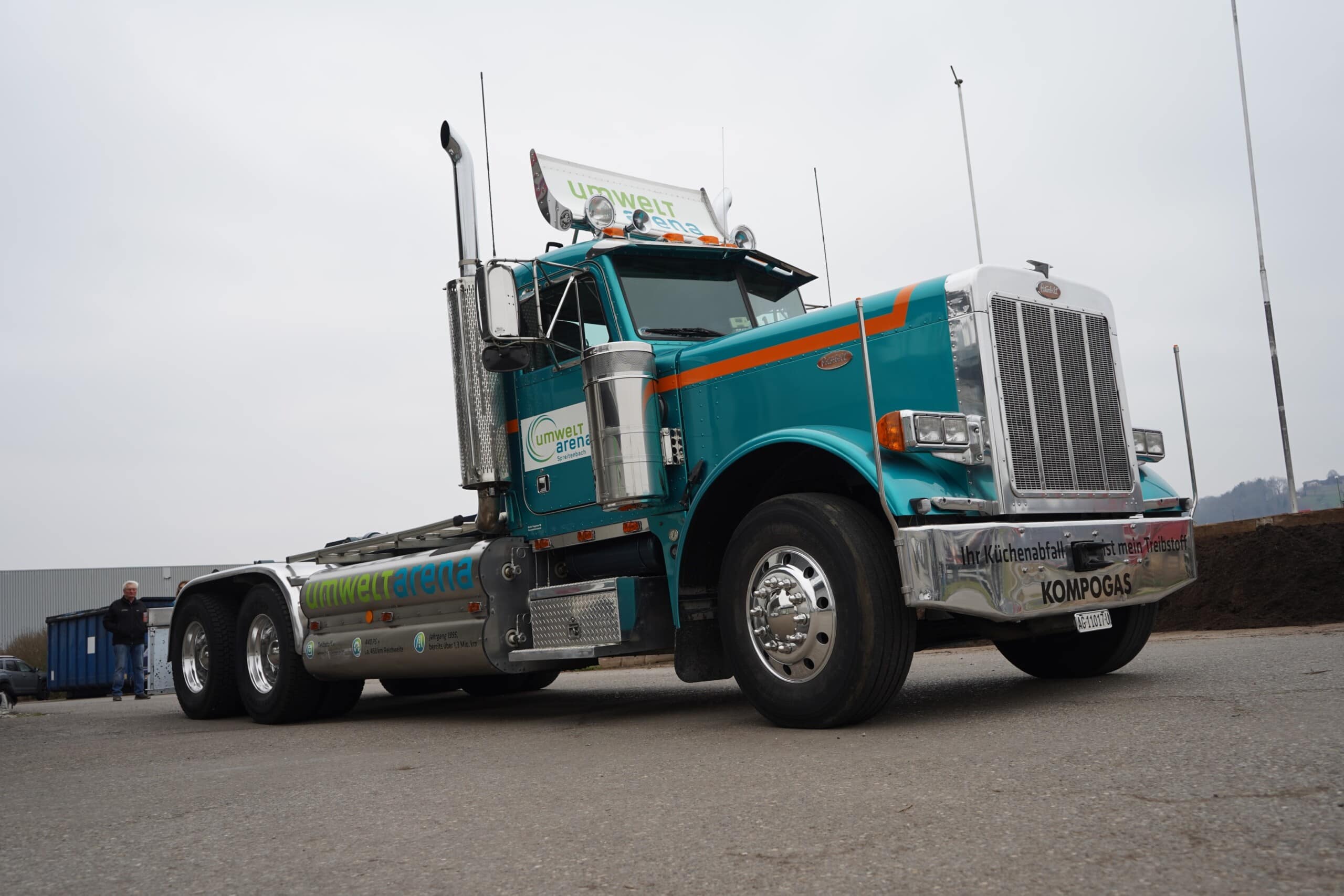 Even after 28 years in service and over 1.3 million almost CO2-neutral kilometres on the road, the Peterbilt with biogas drive is still an impressive sight. Source: CNG-Mobility.ch
Even after 28 years in service and over 1.3 million almost CO2-neutral kilometres on the road, the Peterbilt with biogas drive is still an impressive sight. Source: CNG-Mobility.ch
The idea of a US truck powered by CNG began with Swiss environmental pioneer Walter Schmid: he wanted a truck in Switzerland that ran on a Detroit Diesel Corporation engine – a purely gas-powered engine, not one of the dual motors that are better known nowadays. But it took some time for the imposing Peterbilt to make it onto Swiss roads almost 30 years ago, before it was finally able to clock up its mileage for Schmid, who is a general contractor, founder of Kompogas AG and initiator of the foundation Umwelt Arena Schweiz in Spreitenbach in the canton of Aargau. The standards relating to the new CNG technology were not easily available back then, and a lot was uncharted territory for the Swiss authorities when it came to issuing an official approval.
Although it was possible to purchase and import the CNG engine from the USA in 1994, and it wasn’t till it arrived in Switzerland that the work really started for Otto Egg, chauffeur and fitter, and his colleague Daniel Kern, also a fitter. The two of them converted the Peterbilt truck over the winter, installed the US gas engine under the huge radiator hood and mounted the tanks: Europe’s very first gas-powered truck was born! The drive technology was further developed in cooperation with engineers, suppliers and the VSG research fund, and the Peterbilt finally got its official approval just over a year later. For 28 years now, the CNG truck has been running on its Detroit 60 Series engine with an impressive output of 440 hp and eight tanks on board holding a total of 150 kilos of biogas. It has mainly been driven by Otto Egg.
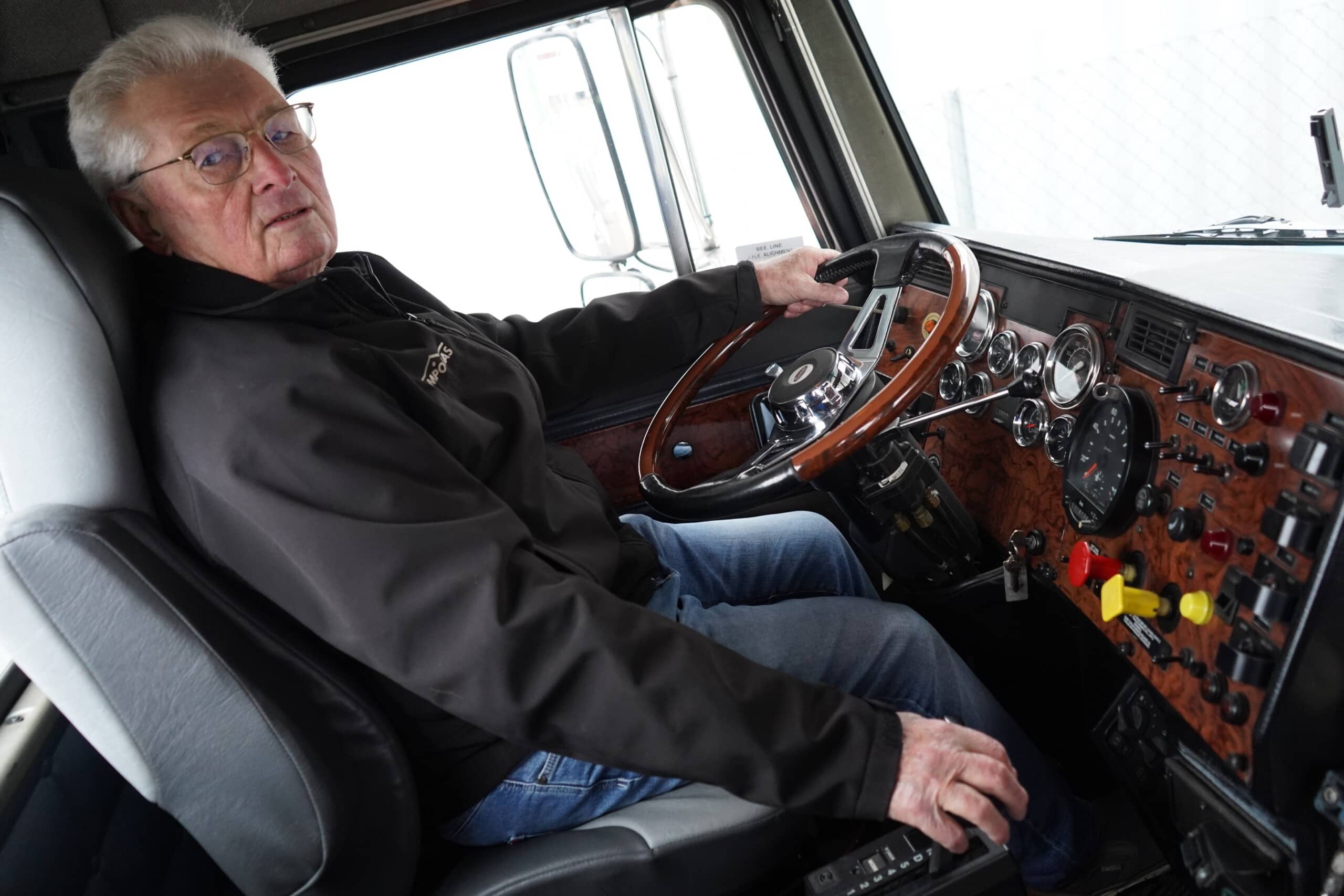 Chauffeur and mechanic and, above all, enthusiastic biogas driver: Otto Egg at the wheel of Europe’s first biogas truck. Source: CNG-Mobility.ch
Chauffeur and mechanic and, above all, enthusiastic biogas driver: Otto Egg at the wheel of Europe’s first biogas truck. Source: CNG-Mobility.ch
Mr Egg, what were the main challenges when it came to converting the vehicle to biogas?
Otto Egg, chauffeur and mechanic: It wasn’t such a challenge. In fact when we checked with the motor vehicle authorities, we even got a very pleasant surprise: we were actually within the valid emission limits.
Why did you choose a US truck and not a European truck model?
In the United States, this type of engine had been successfully used for regular bus transport in San Francisco. We simply bought a truck and an engine to go with it. With its imposing appearance, the Peterbilt stood out from the crowd compared to other trucks – to some extent we wanted to make a statement about the environment, too.
You’ve done 1.3 million kilometres of carbon-neutral travel, i.e. around 3.3 times the distance between the Earth and the Moon. Do you have any special memories that stand out?
I transported organic waste to the various Kompogas plants – often with a trailer: so I actually used the truck to help produce fuel myself. That was the most fun for me on all those trips.
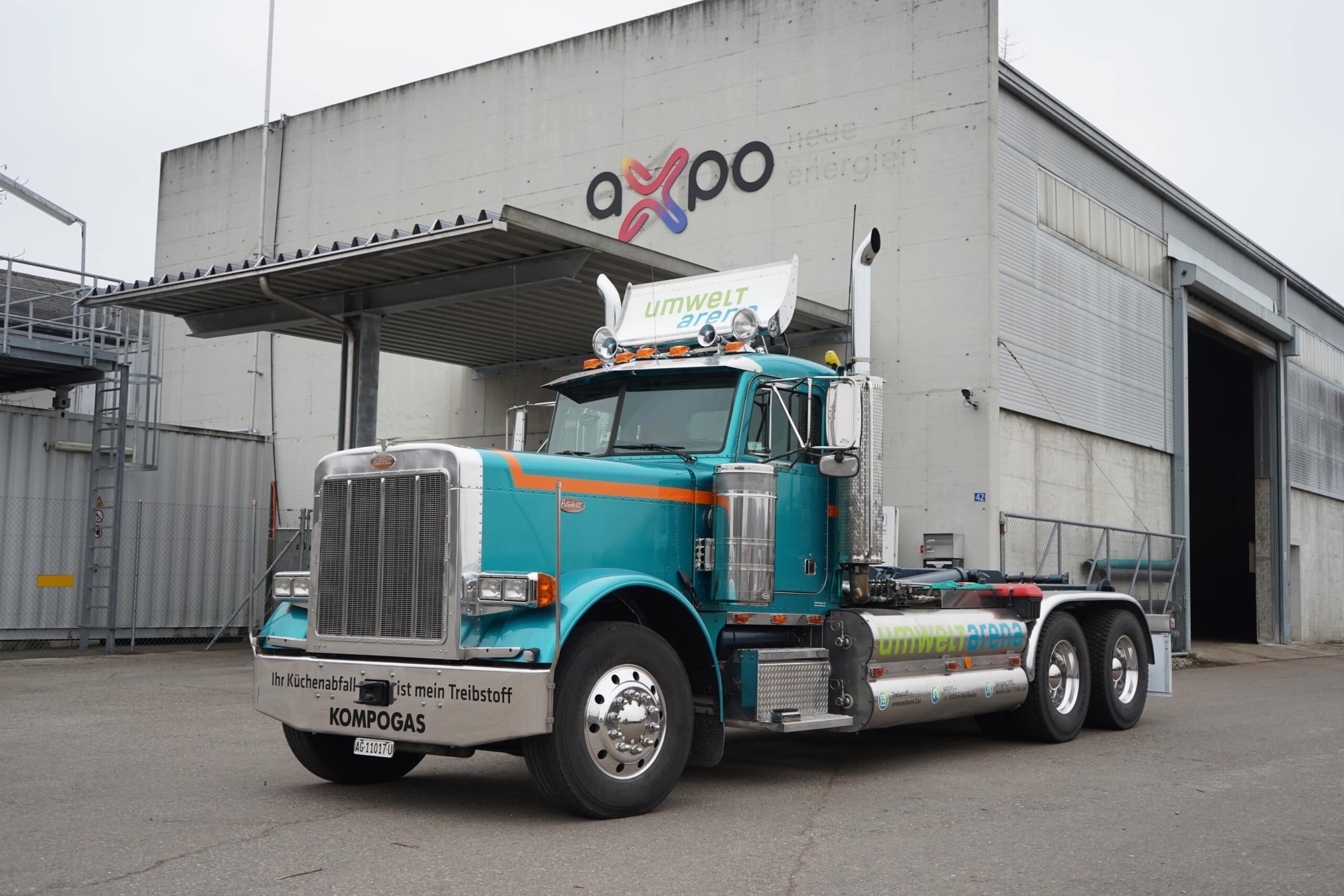 The biogas truck has eight gas tanks for a total of 150 kilos of biogas on board. Source: CNG-Mobility.ch
The biogas truck has eight gas tanks for a total of 150 kilos of biogas on board. Source: CNG-Mobility.ch
You’re a mechanic as well. What kind of repairs did you have to do, given that enormous mileage?
Eigentlich nichts. Der Motor läuft immer noch bestens, und ansonsten galt es nur die normalen Verschleissteile wie etwa Bremsen zu ersetzen.
Didn’t you optimise the drive system throughout this time so as to increase the truck’s efficiency or range, for example?
No, the Peterbilt and the Detroit Diesel Corporation engine harmonised so well that it didn’t seem necessary – especially since biogas meant we were virtually carbon-neutral the whole time. We drove it as it was right from the outset.
28 years is a very long time: nowadays there are trucks that run on hydrogen or on electric power. What arguments are there in favour of a biogas-powered truck in this day and age?
There are several: first of all, the Peterbilt can run one kilometre on just five kilos of kitchen and garden waste. Secondly, biogas and other renewable gases are easy to store. CNG technology is tried and tested, too, and the biogas powertrain is CO2-neutral.
Are there any other arguments?
A biogas-powered truck has much less grey energy because unlike an electrically powered or fuel-cell truck, it doesn’t require large batteries. That’s why I believe it would still be a very good idea to promote mobility with renewable gas and use more trucks powered in this way. It’s also the most cost-effective solution in terms of conversion; and given the network of filling stations, instant day-to-day use is not a problem. The potential of renewable gas is enormous.
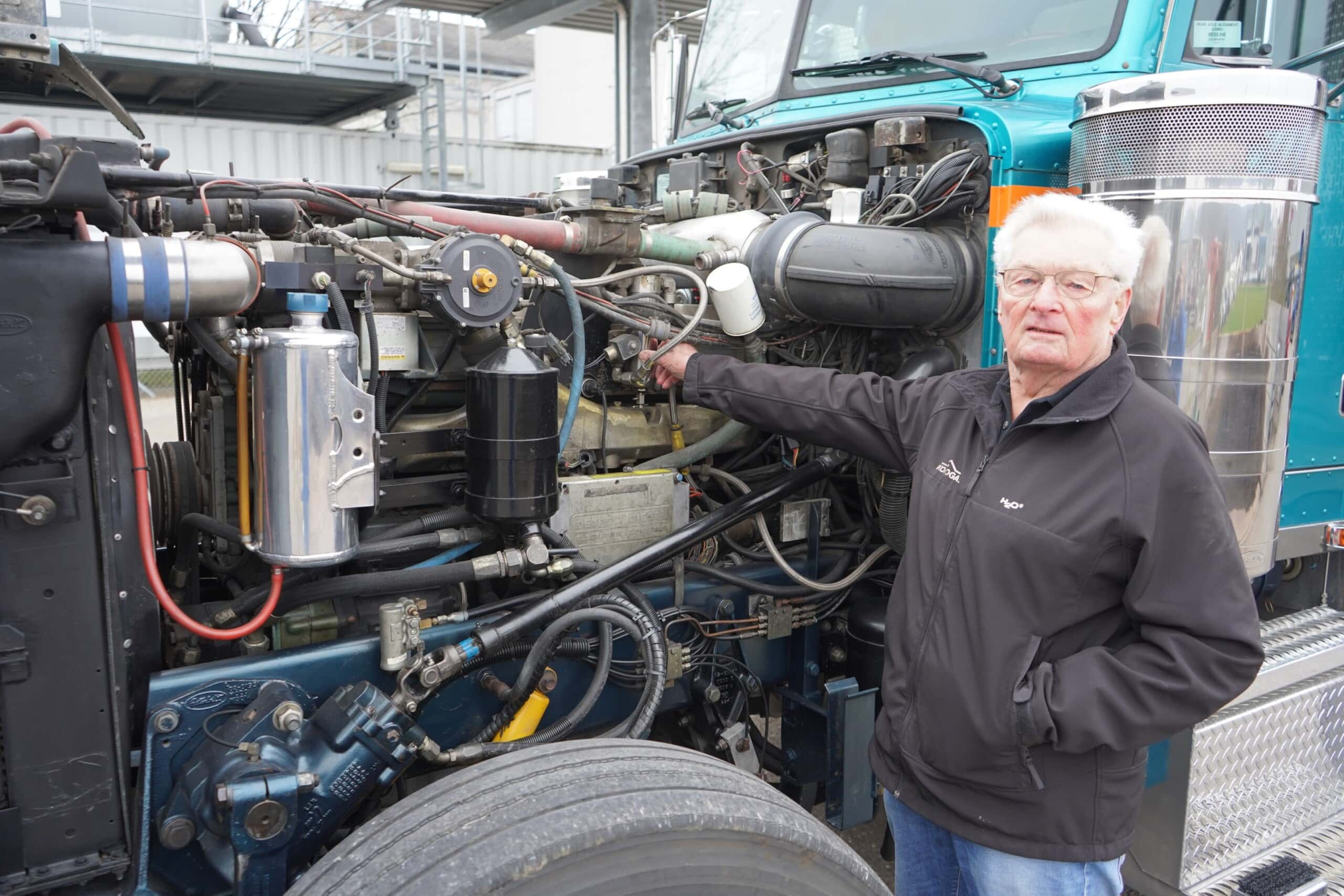 Otto Egg explains details of the pure gas drive with a Detroit Series 60 engine with an impressive 440 hp. Source: CNG-Mobility.ch
Otto Egg explains details of the pure gas drive with a Detroit Series 60 engine with an impressive 440 hp. Source: CNG-Mobility.ch
What do you mean by that?
Currently, at most 50% of kitchen and garden waste in Switzerland is used for energy purposes. If waste of this kind were not incinerated, it could be used to produce biogas as fuel like we do at Kompogas or in sewage treatment plants, or you could produce synthetic gas in power-to-gas plants while at the same time making fertilisers to improve soil quality.
What will become of the Peterbilt – will it go into a museum?
No, no, the Peterbilt is still in operation. Once it’s out of service it might be shown at the Umwelt Arena – the centre of excellence for energy-efficient mobility. But there’s no hurry. There’s already lots of fascinating stuff to see at the Umwelt Arena – including a new permanent exhibition on renewable gas.
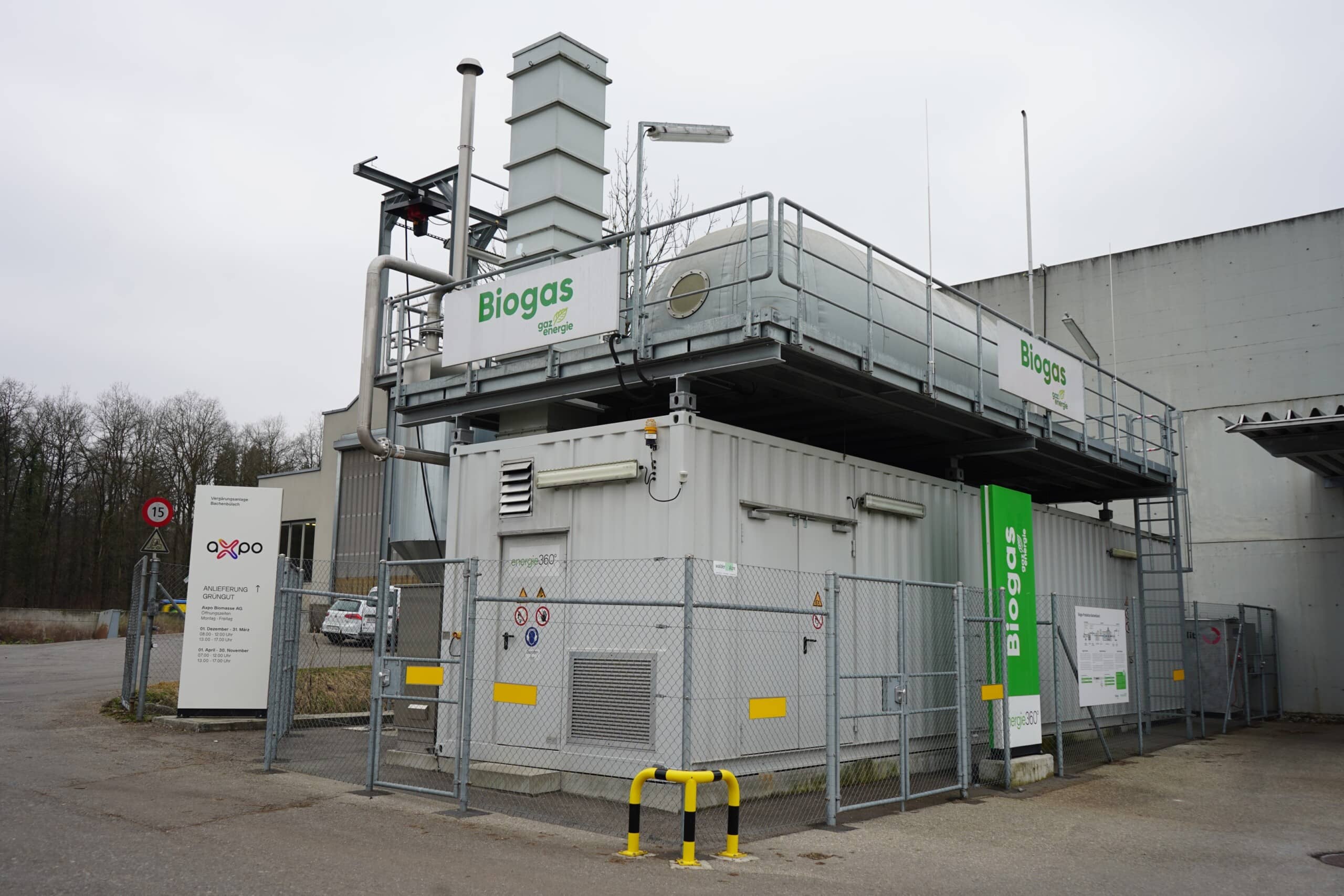 The biogas plant provides the necessary energy that has driven the Peterbilt CO2-neutrally for 28 years, kilometre after kilometre. Source: CNG-Mobility.ch
The biogas plant provides the necessary energy that has driven the Peterbilt CO2-neutrally for 28 years, kilometre after kilometre. Source: CNG-Mobility.ch
What does that show?
It’s sponsored by the Swiss gas industry and illustrates the contribution that renewable gases can make to achieving climate targets – just like my time-honoured Peterbilt. The Swiss gas industry is committed to a net-zero target for greenhouse gas emissions, which means decarbonising the gas supply by 2050. So natural gas will gradually be replaced by renewable and climate-neutral gases.
By renewable and climate-neutral gases, you mean…
In addition to biogas, mainly green hydrogen and the synthetic methane produced from it. The Umwelt Arena in Spreitenbach shows the diverse applications of renewable gas, including in the mobility sector and for heavy-duty applications. Visitors can also find out how biogas is produced and how other renewable gases are generated from renewable electricity using the power-to-gas process, as well as where they can be used. The new permanent exhibition “The Great Potential of Renewable Gas” also demonstrates how innovative gas solutions have the potential to alleviate the foreseeable shortage of electric power in winter. I can only recommend a visit! (jas, 21 March 2023)
You might also be interested in
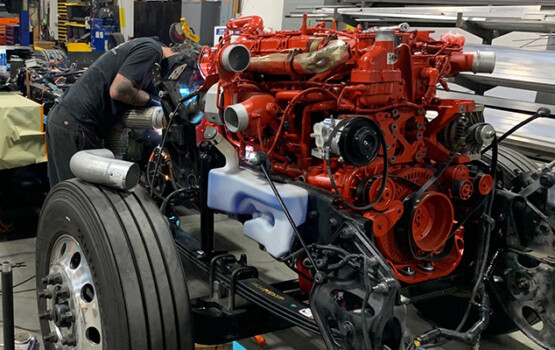
Operation on the open CNG heart

